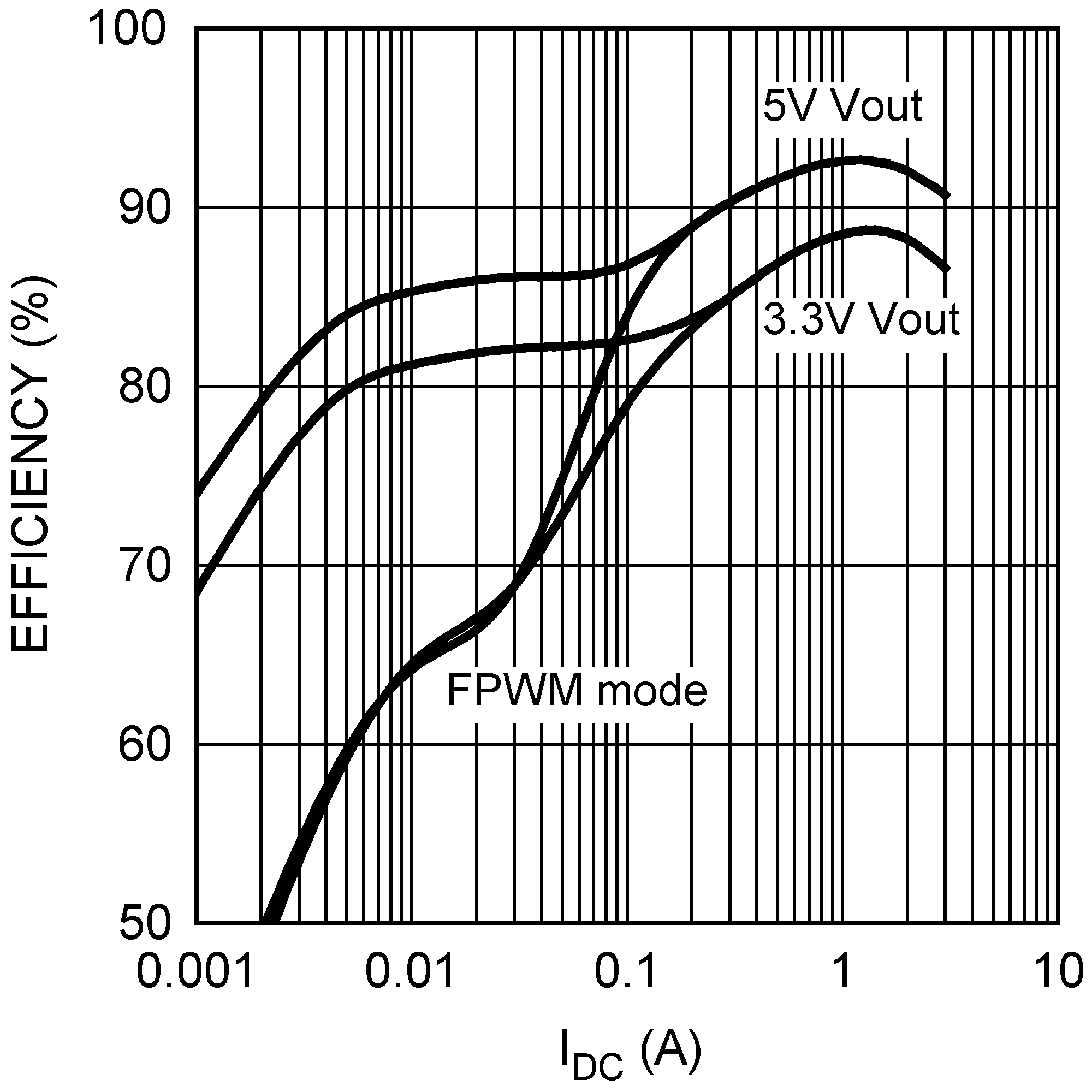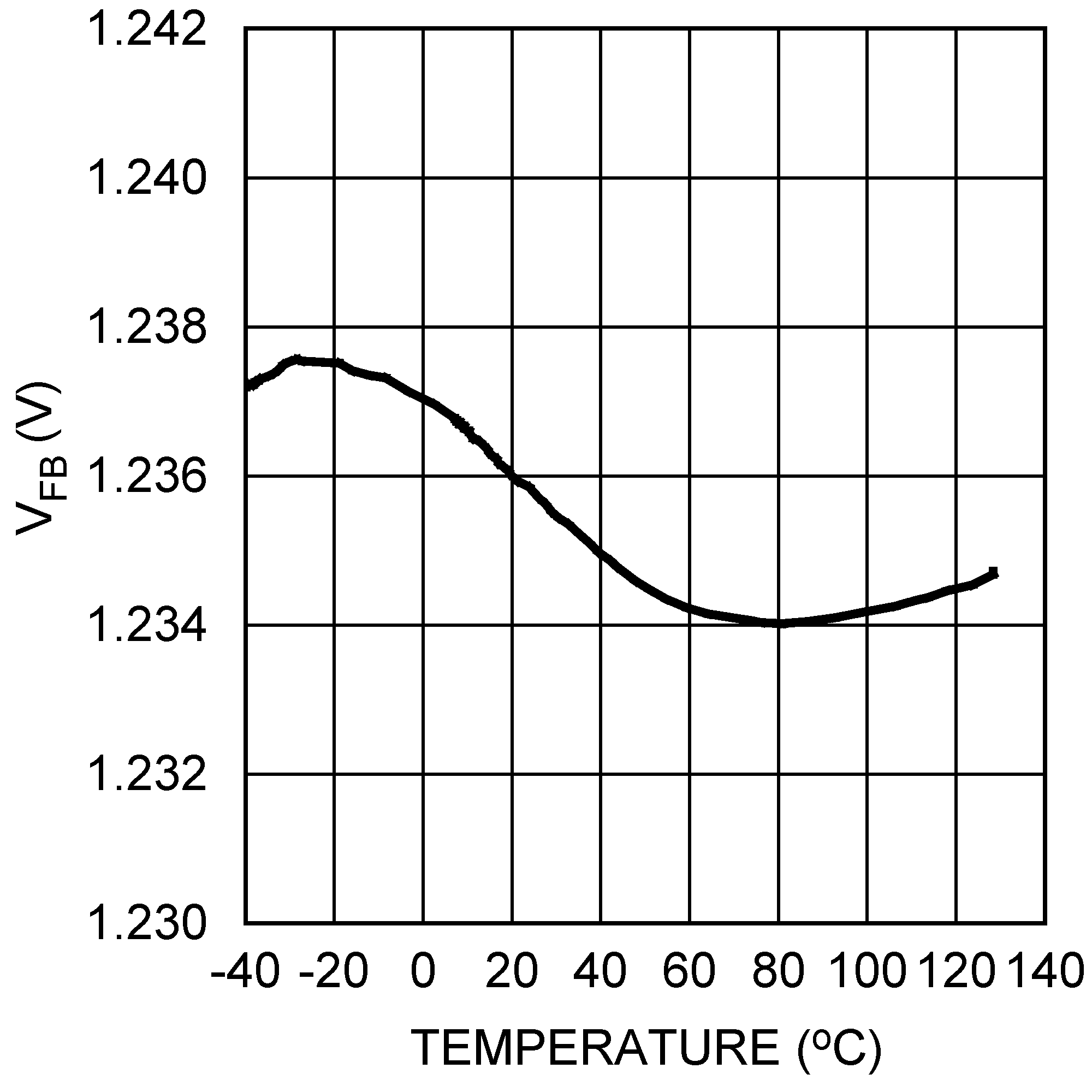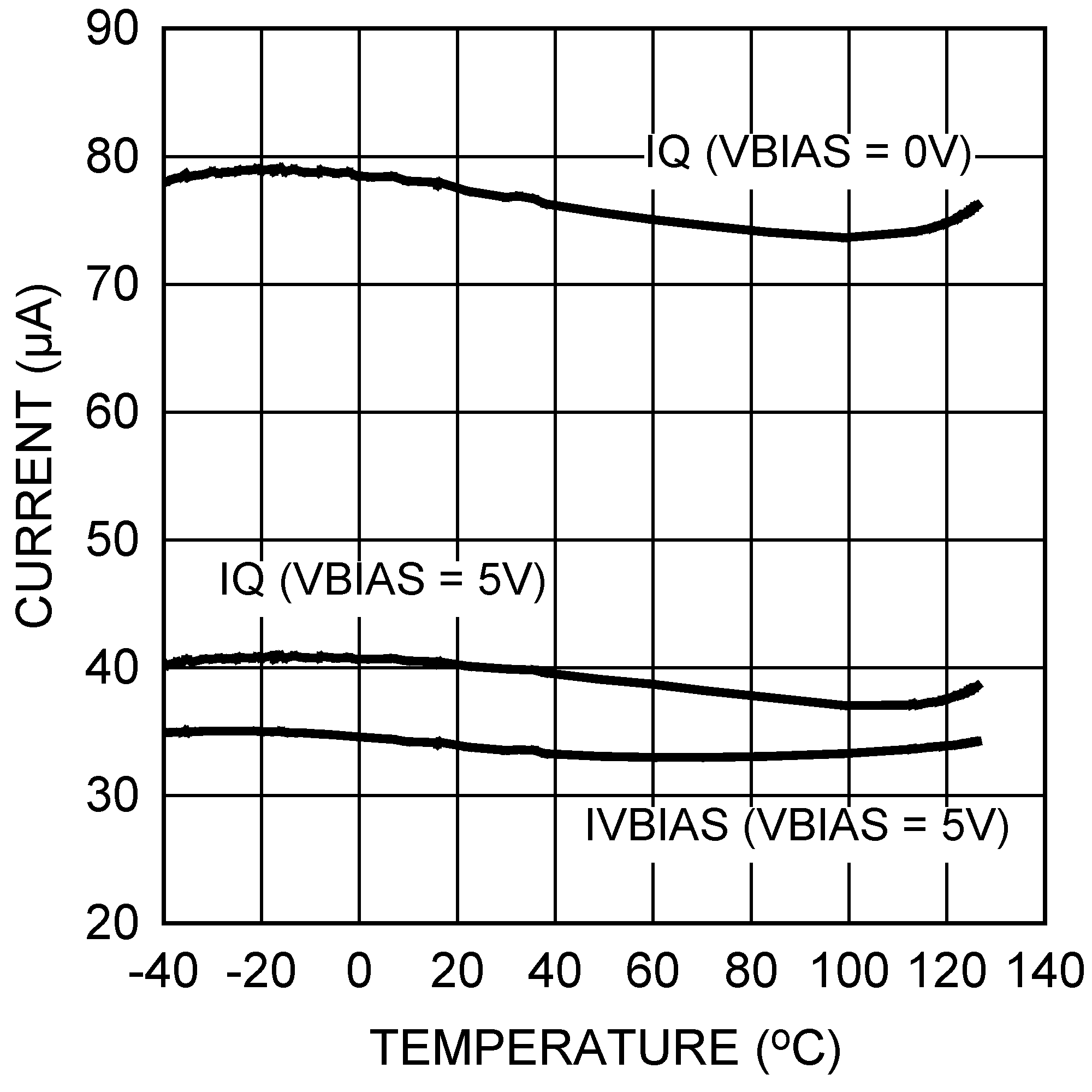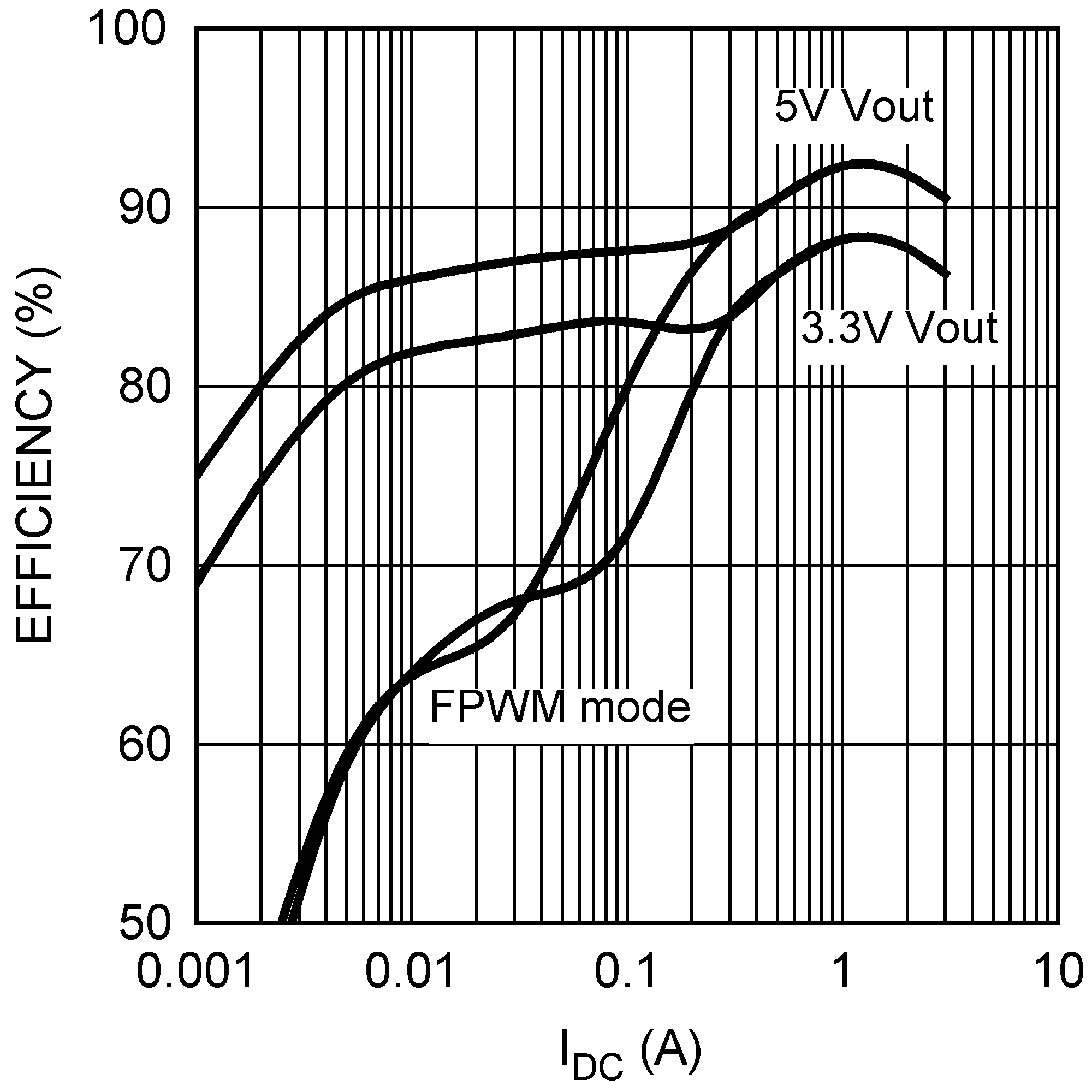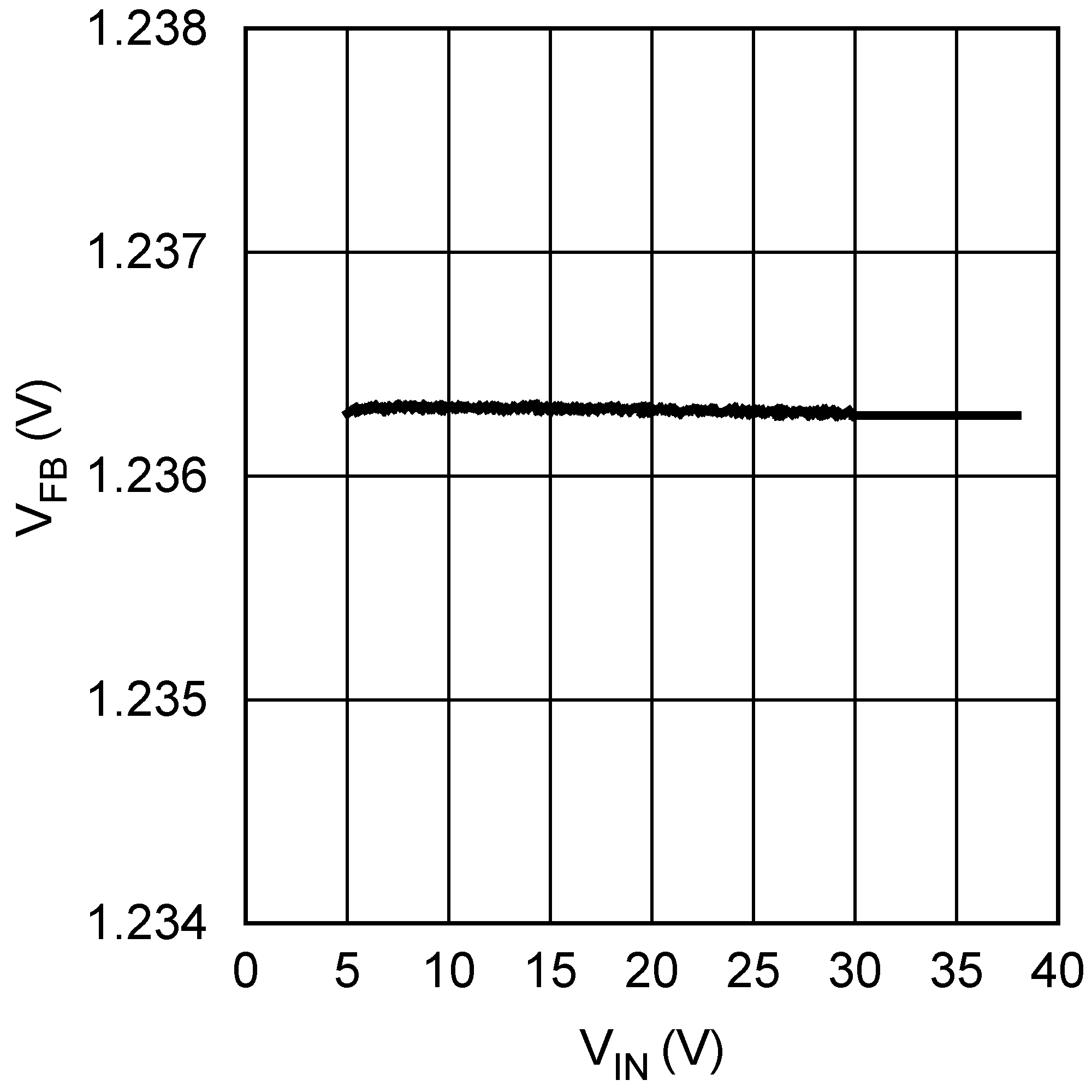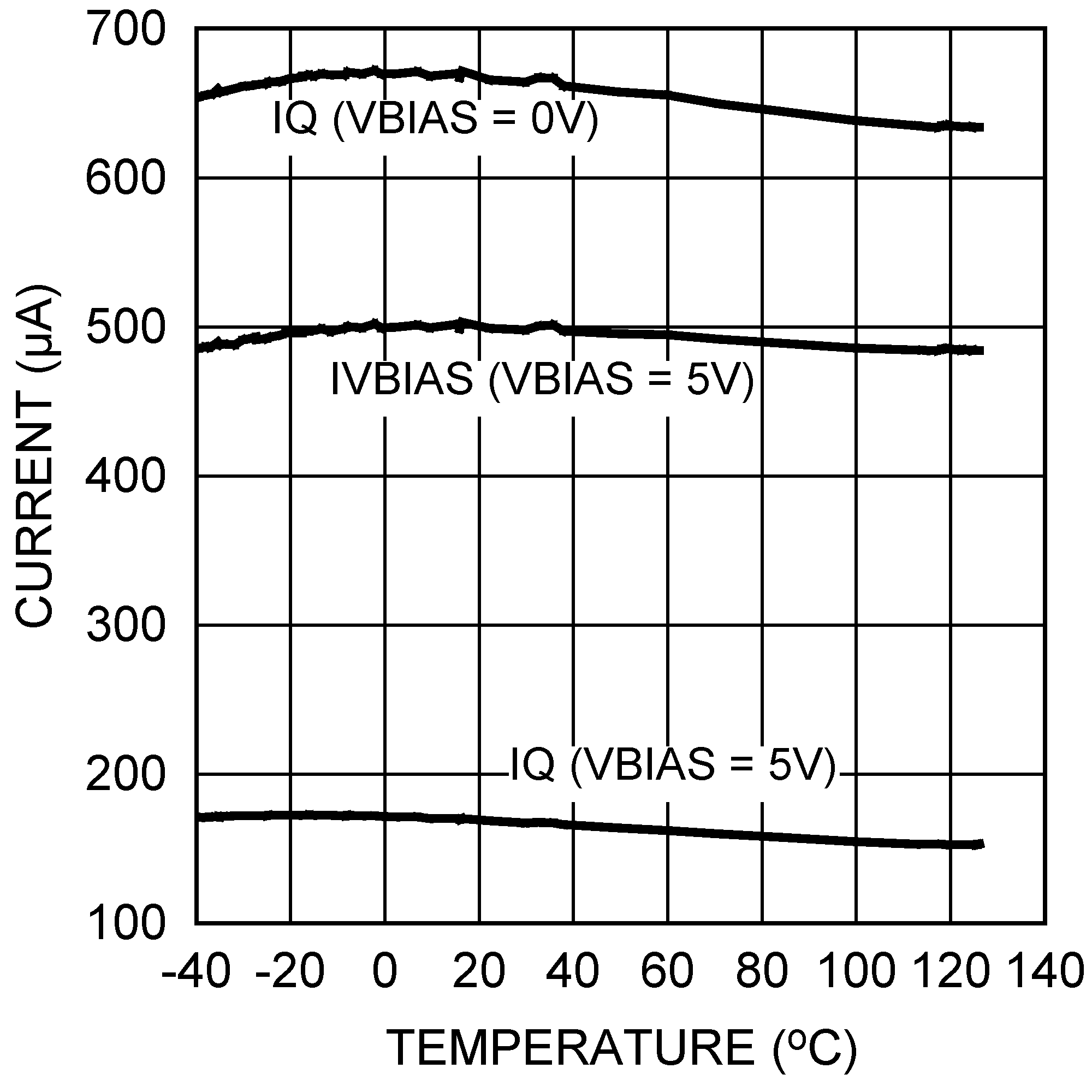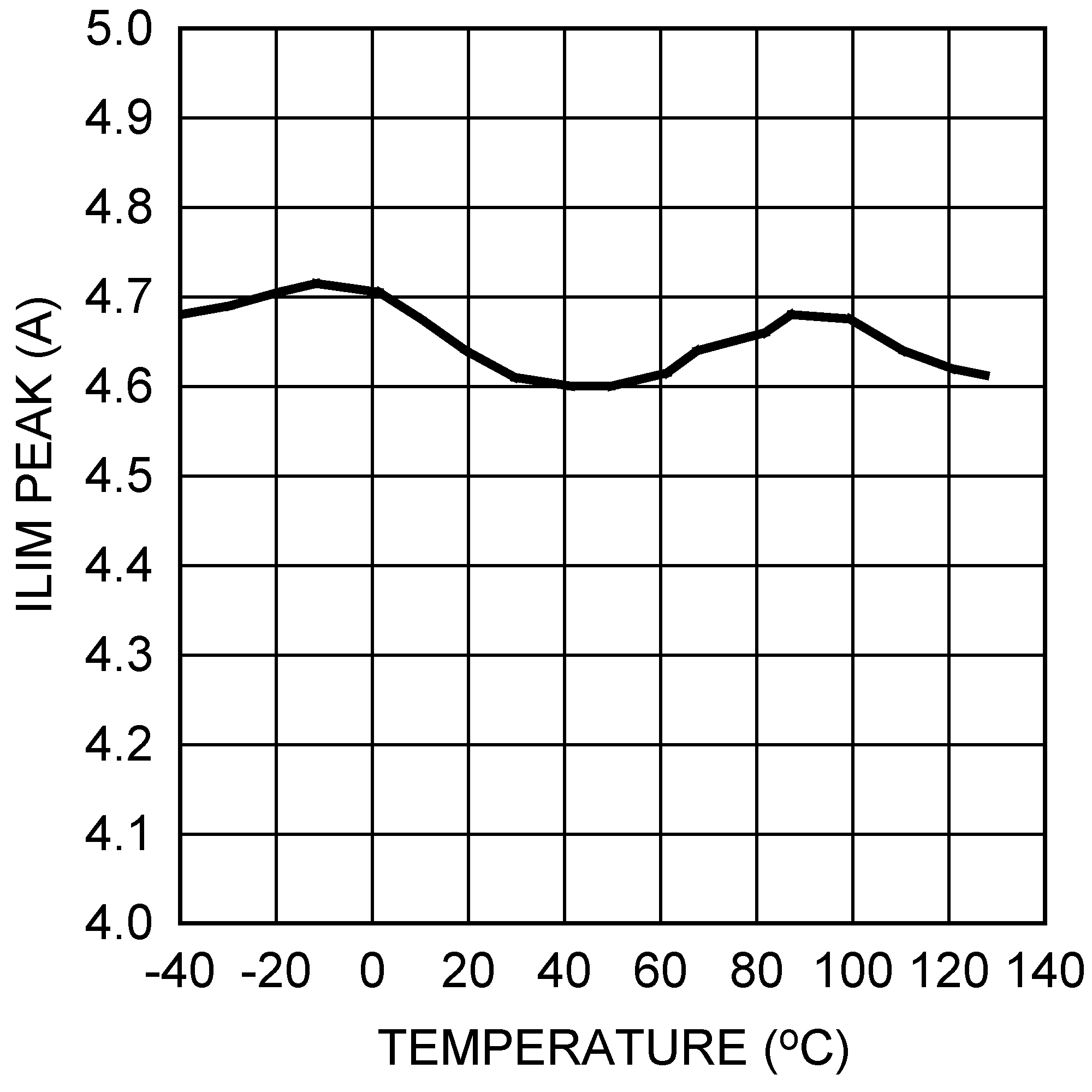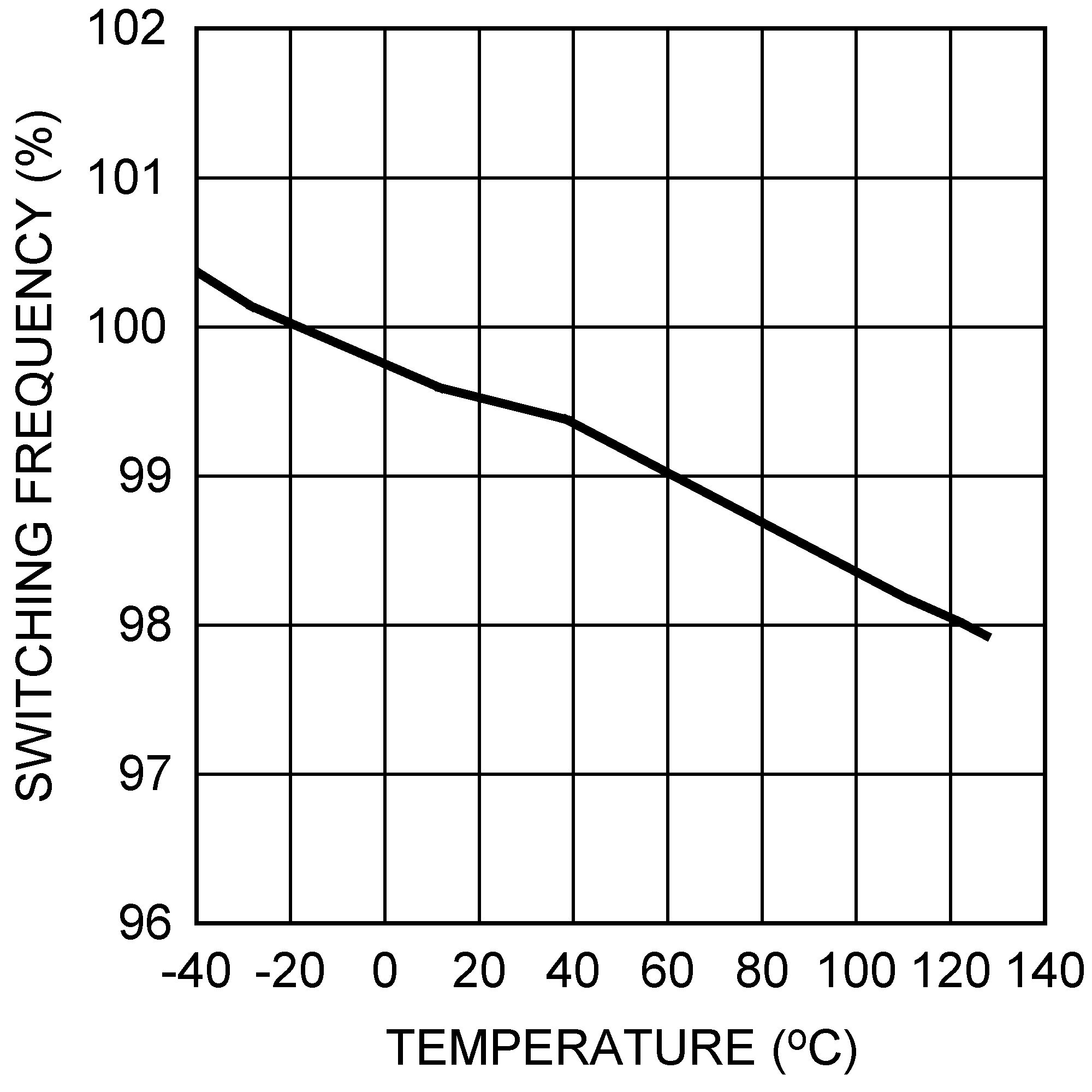SNVS576F August 2008 – February 2015 LM26003 , LM26003-Q1
PRODUCTION DATA.
- 1 Features
- 2 Applications
- 3 Description
- 4 Typical Application Circuit
- 5 Revision History
- 6 Pin Configuration and Functions
- 7 Specifications
- 8 Detailed Description
- 9 Application and Implementation
- 10Power Supply Recommendations
- 11Layout
- 12Device and Documentation Support
- 13Mechanical, Packaging, and Orderable Information
Package Options
Mechanical Data (Package|Pins)
- PWP|20
Thermal pad, mechanical data (Package|Pins)
- PWP|20
Orderable Information
7 Specifications
7.1 Absolute Maximum Ratings
over operating free-air temperature range (unless otherwise noted) (1)(2)| MIN | MAX | UNIT | ||
|---|---|---|---|---|
| Voltages from the indicated pins to GND |
VIN | –0.3 | 40 | V |
| SW | –1 | 40 | V | |
| VDD | –0.3 | 7 | V | |
| VBIAS | –0.3 | 10 | V | |
| FB | -0.3 | 7 | V | |
| BOOT | VSW-0.3 | VSW+7 | V | |
| PGOOD | –0.3 | 7 | V | |
| FREQ | –0.3 | 7 | V | |
| SYNC | –0.3 | 7 | V | |
| EN | –0.3 | 40 | V | |
| FPWM | –0.3 | 7 | V | |
| Power Dissipation | 3.1 | W | ||
| Recommended Lead Temperature | Vapor Phase (70s) | 215 | °C | |
| Infrared (15s) | 220 | °C | ||
| Storage temperature, Tstg | –65 | 150 | °C | |
(1) Stresses beyond those listed under Absolute Maximum Ratings may cause permanent damage to the device. These are stress ratings only, which do not imply functional operation of the device at these or any other conditions beyond those indicated under Recommended Operating Conditions. Exposure to absolute-maximum-rated conditions for extended periods may affect device reliability.
(2) If Military/Aerospace specified devices are required, please contact the Texas Instruments Sales Office/Distributors for availability and specifications.
7.2 ESD Ratings: LM26003
| VALUE | UNIT | ||||
|---|---|---|---|---|---|
| V(ESD) | Electrostatic discharge | Human body model (HBM), per ANSI/ESDA/JEDEC JS-001, all pins(1) | ±2000 | V | |
| Charged device model (CDM), per JEDEC specification JESD22-C101, all pins(2) | ±1000 | ||||
| Charged machine model | ±200000 | ||||
(1) JEDEC document JEP155 states that 500-V HBM allows safe manufacturing with a standard ESD control process.
(2) JEDEC document JEP157 states that 250-V CDM allows safe manufacturing with a standard ESD control process.
7.3 ESD Ratings: LM26003-Q1
| VALUE | UNIT | |||||
|---|---|---|---|---|---|---|
| V(ESD) | Electrostatic discharge | Human body model (HBM), per AEC Q100-002(1) | ±2000 | V | ||
| Charged device model (CDM), per AEC Q100-011 | Corner pins (1, 10, 11, and 20) | ±1000 | ||||
| Other pins | ±1000 | |||||
| Charged machine model | ±200 | |||||
(1) AEC Q100-002 indicates HBM stressing is done in accordance with the ANSI/ESDA/JEDEC JS-001 specification.
7.4 Recommended Operating Conditions
| MIN | NOM | MAX | UNIT | |
|---|---|---|---|---|
| Operating Junction Temperature | −40 | 125 | °C | |
| Supply Voltage | 3.0 | 38 | V |
7.5 Thermal Information
| THERMAL METRIC(1) | LM26003, LM26003-Q1 | UNIT | |
|---|---|---|---|
| PWP | |||
| 20 PINS | |||
| RθJA | Junction-to-ambient thermal resistance | 25.4 | °C/W |
| RθJC(top) | Junction-to-case (top) thermal resistance | 19.6 | |
| RθJB | Junction-to-board thermal resistance | 16.5 | |
| ψJT | Junction-to-top characterization parameter | 0.5 | |
| ψJB | Junction-to-board characterization parameter | 16.3 | |
| RθJC(bot) | Junction-to-case (bottom) thermal resistance | 0.8 | |
(1) For more information about traditional and new thermal metrics, see the IC Package Thermal Metrics application report, SPRA953.
7.6 Electrical Characteristics
Unless otherwise stated, Vin = 12 V, TJ = 25°C. Minimum and Maximum limits are ensured through test, design, or statistical correlation.| PARAMETER | TEST CONDITIONS | MIN | TYP(1) | MAX | UNIT | |
|---|---|---|---|---|---|---|
| SYSTEM | ||||||
| ISD(2) | Shutdown Current | EN = 0 V | 10.8 | µA | ||
| EN = 0 V, –40°C ≤ TJ ≤ 125°C | 20 | |||||
| IqSleep_VB(2) | Quiescent Current | Sleep mode, VBIAS = 5 V | 40 | µA | ||
| Sleep mode, VBIAS = 5 V, –40°C ≤ TJ ≤ 125°C | 70 | |||||
| IqSleep_VDD | Quiescent Current | Sleep mode, VBIAS = GND | 76 | µA | ||
| Sleep mode, VBIAS = GND, –40°C ≤ TJ ≤ 125°C | 125 | |||||
| IqPWM_VB | Quiescent Current | PWM mode, VBIAS = 5 V FPWM = 2 V |
0.16 | 0.23 | mA | |
| IqPWM_VDD | Quiescent Current | PWM mode, VBIAS = GND FPWM = 2 V |
0.65 | 0.85 | mA | |
| IBIAS_Sleep(2) | Bias Current | Sleep mode, VBIAS = 5 V | 33 | µA | ||
| Sleep mode, VBIAS = 5 V, –40°C ≤ TJ ≤ 125°C | 60 | |||||
| IBIAS_PWM | Bias Current | PWM mode, VBIAS = 5 V | 0.5 | 0.7 | mA | |
| VFB | Feedback Voltage | 5 V < Vin < 38 V | 1.236 | V | ||
| 5 V < Vin < 38 V, –40°C ≤ TJ ≤ 125°C | 1.217 | 1.255 | ||||
| IFB | FB Bias Current | VFB = 1.20 V | ±200 | nA | ||
| ΔVOUT/ΔVIN | Output Voltage Line Regulation | 5 V < Vin < 38 V | 0.00025 | %/V | ||
| ΔVOUT/ΔIOUT | Output Voltage Load Regulation | 0.8 V < VCOMP < 1.15 V | 0.08 | %/A | ||
| VDD | VDD Pin Output Voltage | 7 V < Vin < 35 V, IVDD= 0 mA to 5 mA | 5.99 | V | ||
| 7 V < Vin < 35 V, IVDD= 0 mA to 5 mA, –40°C ≤ TJ ≤ 125°C | 5.50 | 6.50 | ||||
| ISS_Source | Soft-start Source Current | 2.5 | µA | |||
| –40°C ≤ TJ ≤ 125°C | 1.5 | 4.6 | ||||
| Vbias_th | VBIAS On Voltage | Specified at IBIAS = 92.5% of full value | 2.64 | 2.9 | 3.07 | V |
| PROTECTION | ||||||
| ILIMPK | Peak Current Limit | 4.7 | A | |||
| –40°C ≤ TJ ≤ 125°C | 3.15 | 6.05 | ||||
| VFB_SC | Short Circuit Frequency Foldback Threshold | Measured at FB falling | 0.87 | V | ||
| F_min_sc | Min Frequency in Foldback | VFB < 0.3 V | 45 | kHz | ||
| VTH_PGOOD | Power Good Threshold | Measured at FB, PGOOD rising | 92% | |||
| Measured at FB, PGOOD rising, –40°C ≤ TJ ≤ 125°C | 89% | 95% | ||||
| PGOOD Hysteresis | 2% | 6% | 8% | |||
| IPGOOD_HI | PGOOD Leakage Current | PGOOD = 5 V | 1.25 | nA | ||
| RDS_PGOOD | PGOOD On Resistance | PGOOD sink current = 500 µA | 150 | Ω | ||
| VUVLO | Under-voltage Lock-Out Threshold | Vin falling , shutdown, VDD = VIN | 2.96 | V | ||
| Vin falling , shutdown, VDD = VIN, –40°C ≤ TJ ≤ 125°C | 2.70 | 3.30 | ||||
| Vin rising, soft-start, VDD = VIN | 3.99 | |||||
| Vin rising, soft-start, VDD = VIN, –40°C ≤ TJ ≤ 125°C | 3.70 | 4.30 | ||||
| TSD | Thermal Shutdown Threshold | 160 | °C | |||
| θJA | Thermal Resistance | Power dissipation = 1W, 0 lfpm air flow | 32 | °C/W | ||
| LOGIC | ||||||
| VthEN | Enable Threshold Voltage | Enable rising | 1.18 | V | ||
| Enable rising, –40°C ≤ TJ ≤ 125°C | 0.8 | 1.4 | ||||
| Enable Hysteresis | 180 | mV | ||||
| IEN_Source | EN Source Current | EN = 0 V | 4.85 | µA | ||
| VTH_FPWM | FPWM Threshold | 1.24 | V | |||
| –40°C ≤ TJ ≤ 125°C | 0.8 | 1.6 | ||||
| IFPWM | FPWM Leakage Current | FPWM = 5 V | 3 | nA | ||
| EA | ||||||
| gm | Error Amp Trans-conductance | 675 | µmho | |||
| –40°C ≤ TJ ≤ 125°C | 400 | 1000 | ||||
| ICOMP | COMP Source Current | VCOMP = 0.9 V | 57 | µA | ||
| COMP Sink Current | VCOMP = 0.9 V | 57 | µA | |||
| VCOMP | COMP Pin Voltage Range | 0.64 | 1.27 | V | ||
(1) Min and Max limits are 100% production tested at 25°C. Limits over the operating temperature range are ensured through correlation using Statistical Quality Control (SQC) methods. Limits are used to calculate Average Outgoing Quality Level (AOQL).
(2) Iq and ISD specify the current into the VIN and AVIN pins. IBIAS is the current into the VBIAS pin when the VBIAS voltage is greater than 3 V. All quiescent current specifications apply to non-switching operation.
7.7 Switching Characteristics
over operating free-air temperature range (unless otherwise noted)| PARAMETER | TEST CONDITIONS | MIN | TYP | MAX | UNIT | |
|---|---|---|---|---|---|---|
| RDS(ON) | Switch On Resistance | Isw = 2A | 0.095 | Ω | ||
| Isw = 2A, –40°C ≤ TJ ≤ 125°C | 0.040 | 0.200 | ||||
| Isw_off | Switch Off State Leakage Current | Vin = 38 V, VSW = 0 V | 0.002 | μA | ||
| Vin = 38 V, VSW = 0 V, –40°C ≤ TJ ≤ 125°C | 5.0 | |||||
| fsw | Switching Frequency | RFREQ = 62k, 124k, 240k, –40°C ≤ TJ ≤ 125°C | ±10% | |||
| VFREQ | FREQ Voltage | 1.0 | V | |||
| fSW range | Switching Frequency Range | –40°C ≤ TJ ≤ 125°C | 150 | 500 | kHz | |
| VSYNC | Sync Pin Threshold | SYNC rising | 1.23 | V | ||
| SYNC rising, –40°C ≤ TJ ≤ 125°C | 1.6 | |||||
| SYNC falling | 1.10 | |||||
| SYNC falling, –40°C ≤ TJ ≤ 125°C | 0.8 | |||||
| Sync Pin Hysteresis | 135 | mV | ||||
| ISYNC | SYNC Leakage Current | 2 | nA | |||
| FSYNC_UP | Upper Frequency Synchronization Range | As compared to nominal fSW, –40°C ≤ TJ ≤ 125°C | +30% | |||
| FSYNC_DN | Lower Frequency Synchronization Range | As compared to nominal fSW, –40°C ≤ TJ ≤ 125°C | –20% | |||
| TOFFMIN | Minimum Off-time | 300 | ns | |||
| TONMIN | Minimum On-time | 190 | ns | |||
| THSLEEP_HYS | Sleep Mode Threshold Hysteresis | VFB rising, % of THWAKE | 101.3% | |||
| THWAKE | Wake Up Threshold | Measured at falling FB, COMP = 0.6 V | 1.236 | V | ||
| IBOOT | BOOT Pin Leakage Current | BOOT = 6 V, SW = GND | 0.001 | μA | ||
| BOOT = 6 V, SW = GND, –40°C ≤ TJ ≤ 125°C | 5.0 | |||||
7.8 Typical Characteristics
Unless otherwise specified the following conditions apply: Vin = 12 V, TJ = 25°C.